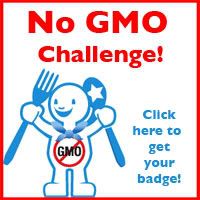
We eat eggs. With the six of us, we go through about a dozen a day. We use them for any meal and in many ways. Eggs are an inexpensive yet good source of protein and nutrients and the magical egg - it does amazing things: soufflés, frittatas, sauces, pudding and custards, cheesecake, baked goods, meatloaf, casseroles, soups, stir-fries or all on it's own, truly a versatile food.
The whites and yellows each have their own unique properties. We can whip the whites to add lightness and air to dishes, while the yellows act as an emulsifier and adds creamy richness. The whites contain protein and no fat while yolks contain half of the protein in the egg and all the fat (about 4.5 grams of fat, 1.5 of which is saturated and the rest is polyunsaturated which has been shown to decrease LDL cholesterol) as well as most of the vitamins, minerals and antioxidants. The yolks offer all the vitamin A, D, E, and zinc that is in an egg as well as a larger percentage of the phosphorus, manganese, iron, iodine, copper, and calcium than the white. The yolks are also a rich source of Lutein and Zeaxanthin, (carotenoids) essential vitamins with antioxidant value .
Yolk color is determined by what the bird eats. Deep yellow to orange egg yolks are richer in carotenoids.
Contrary to what you may have heard, eggs do not increase bad cholesterol. Nor do they increase the risk of heart disease or stroke, for the average person who is not at high risk. (Hu, F.B., M.J. Stampfer, et al. 1999) (JAMA 281(15):1387-94.) Bad Cholesterol, LDL, is based upon what you eat (saturated fats and transfats) and even what you don't eat (vegetables), than simply your egg intake.

Egg color is simply an aesthetic preference. Birds that lay brown eggs tend to be larger birds with reddish brown feathers and earlobes around their neck. Since they are bigger, they eat more food than their paler cousins and therefore these eggs are a bit more expensive. White egg layers have white feathers on their neck and white earlobes. The breed of the hen determines shell color. Aracona chickens lay a lovely green shaded egg.
Size is actually determined by the age of a hen. The older the hen, the larger the egg. Double yolks come from the same hens making the XL eggs.
Fresh eggs from pastured free roaming hens allowed to eat bugs and raised under organic conditions are best. Fresh eggs are noticeably different. The yellows stand up and are perky. There isn't the air pocket in the shell that forms between the shell and the membrane as it ages. When you put a whole fresh eggs in a glass full of water, it will sink while an older egg will float due to that air pocket. But older eggs aren't all bad. When the whites are more broken down from age they whip up lighter and fluffier making higher soufflés.
Fresh eggs will also have a more noticeable chalaza (the egg white strand that anchors the yolk in place). (The chalaza is indeed supposed to be there and it is not an embryo. It does not need to be removed.)
If your egg white is a bit cloudy, you can be assured of a very fresh egg. The cloudiness is from carbon dioxide found in the young egg that has not had time to escape yet from the shell.
Believe it or not, a bright red blood spot would also indicate a fresh egg. Though very rare nowadays, less than 1% of all eggs have blood spots, they usually occur from a rupture of a blood vessel on the surface of the yolk follicle. The blood spot can be removed for aesthetics; a blood spot does not make the egg inedible.
However, eggs with blood spots are not considered kosher. This is because blood spots can also occur due to fertilization. Of course, most hens are not allowed anywhere near a rooster so fertilization is an impossibility in today's eggs, but religion dictates that we toss the egg with the blood spot. The laws of Kashrut do not dictate white eggs over brown or other color eggs, just that it not be a fertilized egg. Some people believe that there are more blood spots in brown eggs than white eggs because they mistakenly think that a naturally occurring brown marks of coloration in the brown egg are a blood spot. The laws of kashrut are clear that it is the red blood spot that is not allowed for fear of fertilization and that brown spots can be ignored.
Inappropriate temperature and humidity will age an egg. (A week-old egg can actually be fresher than a day-old egg.) In the U.S. eggs are refrigerated but in other parts of the world they are not. They will keep fresh out of the refrigerator if never placed in a refrigerator but once they are refrigerated, they must always be refrigerated to maintain freshness.
Conventional eggs are from hens living in very cramped quarters where their beaks are clipped so they don't peck at themselves or their sisters who are literally stacked on top of one another. They are fed genetically modified and pesticide-doused corn and soy and sometimes their own brothers ground in the feed. They live stressful lives in a toxic environment - that is carried through in the eggs they produce. Just remember, you are what you eat.
Choose organic free range eggs. Yes, they are more money, they need more room but organic eggs are more nutritious so you get more bang for your buck. Organic eggs are from hens given no hormones or antibiotics and fed only organically certified feed grown without pesticides, insecticides or herbicides. They are free roaming and must have access to fresh air. They are healthy eggs and all in all, we're not talking $10 for a dozen eggs, it's still pennies an egg, maybe dimes, but seriously, is that the quibble here? Cheap eggs to poison our world, our animals, and our bodies or healthy eggs to make us strong that cost less than .40 each as an inexpensive source of nutrition.
This post is part of the No GMO Challenge - JOIN US!

 We usually get our pots & pans based upon sales or what our mom used for our childhood meals. We don't much think about it again but as we get healthier in what we eat, we start to also look at the tools we use to prepare our healthful meals.
We usually get our pots & pans based upon sales or what our mom used for our childhood meals. We don't much think about it again but as we get healthier in what we eat, we start to also look at the tools we use to prepare our healthful meals. Most cookware on the market is coated with Teflon to make the fat-free cooks happy. Teflon and Silverstone coating is convenient for sticky food and things like eggs, but there are real dangers when not used properly:
Most cookware on the market is coated with Teflon to make the fat-free cooks happy. Teflon and Silverstone coating is convenient for sticky food and things like eggs, but there are real dangers when not used properly: Aluminum is also popular since it is a great conductor of heat and is cheap. Most restaurants use aluminum cookware to prepare food but aluminum is a poison and leaches into our foods (and you'd better believe those aluminum pans used in restaurants are all scratched up so pieces of aluminum are surely in the foods prepared for our enjoyment - which is another reason we tend to not eat out.) Anodized Aluminum does effectively seal the chemicals but harsh chemicals are used to create the anodized aluminum. In addition, it can scratch easily and then you get the aluminum and the black specs (toxic chemicals) into your foods. And it is definitely not dishwasher friendly.
Aluminum is also popular since it is a great conductor of heat and is cheap. Most restaurants use aluminum cookware to prepare food but aluminum is a poison and leaches into our foods (and you'd better believe those aluminum pans used in restaurants are all scratched up so pieces of aluminum are surely in the foods prepared for our enjoyment - which is another reason we tend to not eat out.) Anodized Aluminum does effectively seal the chemicals but harsh chemicals are used to create the anodized aluminum. In addition, it can scratch easily and then you get the aluminum and the black specs (toxic chemicals) into your foods. And it is definitely not dishwasher friendly. Stainless is the most economical choice but is not a good conductor so is always plied with other metals. You can easily scratch it and some of the chromium or nickel may leach into the food, but very minute amount. If a magnet sticks to your stainless steel cookware, it has less nickel and is therefore a safer option.
Stainless is the most economical choice but is not a good conductor so is always plied with other metals. You can easily scratch it and some of the chromium or nickel may leach into the food, but very minute amount. If a magnet sticks to your stainless steel cookware, it has less nickel and is therefore a safer option. Instead choose cast iron (preferably not pre-seasoned and season it yourself that way you know what kind of oil you are using), enameled cast iron, ceramic, glass, or a safe stainless steel cookware.
Instead choose cast iron (preferably not pre-seasoned and season it yourself that way you know what kind of oil you are using), enameled cast iron, ceramic, glass, or a safe stainless steel cookware.

































































